The WINNERS of the 2021 New York Wine Classic. The BIG FIVE – the best Sparkling, White, Pink, Red & Dessert wines of the competition. This year, the white wine took home the coveted ‘Governor’s Cup’ – for the best wine in the whole competition; and the ‘Winery of the Year” award – presented to the winery with the best overall showing (based on the level and number of awards in relation to entries) won best Sparkling AND best Red! They’re all delicious. I’ve been tasked with making the experience of drinking them even better.
I know what you’re thinking – tough gig.
How could we possibly elevate these celebrated wines? How do you turn a “10” into an ELEVEN? Well, I have one word for you – rich, savory, fresh, supple, creamy, gooey, sharp, ripe, artisan, you-know-it, we-love-it, CHEESE.
The exciting thing about cheese is the complexity and range of the flavour profiles. Equally as complex as fine wine and just as much to work with if I had four cheeses, as compared to a four course meal.
There are a few important principles that I always look to when it comes to pairing with cheese – and the most important is BALANCE. You want these pairings to be equally matched – the stronger the wine or cheese, the stronger it’s counterpart should be. Balancing fat and acid – the richer the cheese, the more acid you need in the wine. And balancing the tannins and protein – we’ll dig into that with our red wine pairing.
A good rule of thumb – if it grows together, it goes together. A French wine has a high likelihood of pairing successfully with a French cheese! (Assuming you don’t forget about BALANCE.) These things share terroir – a sense of place! With that in mind, I tried to offer an American artisan cheese suggestion when it fits, four of which hail from the Empire State. I also considered the ancestral home of each grape and their local pairings!
Everyone’s palate is unique – the parts of your brain that process flavour are closely related to the parts of your brain that manage memory and emotion – literally what makes you, you! So with that said, it’s worth noting that wine pairing is tricky business! The following pairings are simply my humble suggestions, along with my reasoning for pairing them. I encourage you to try experiments like these on your own! When it comes to pairing – rules are meant to be broken.
The research was fierce. The only thing that surpassed the number of combinations tasted was the number of calories consumed. Of those, 10 cheeses received the DB seal of approval…
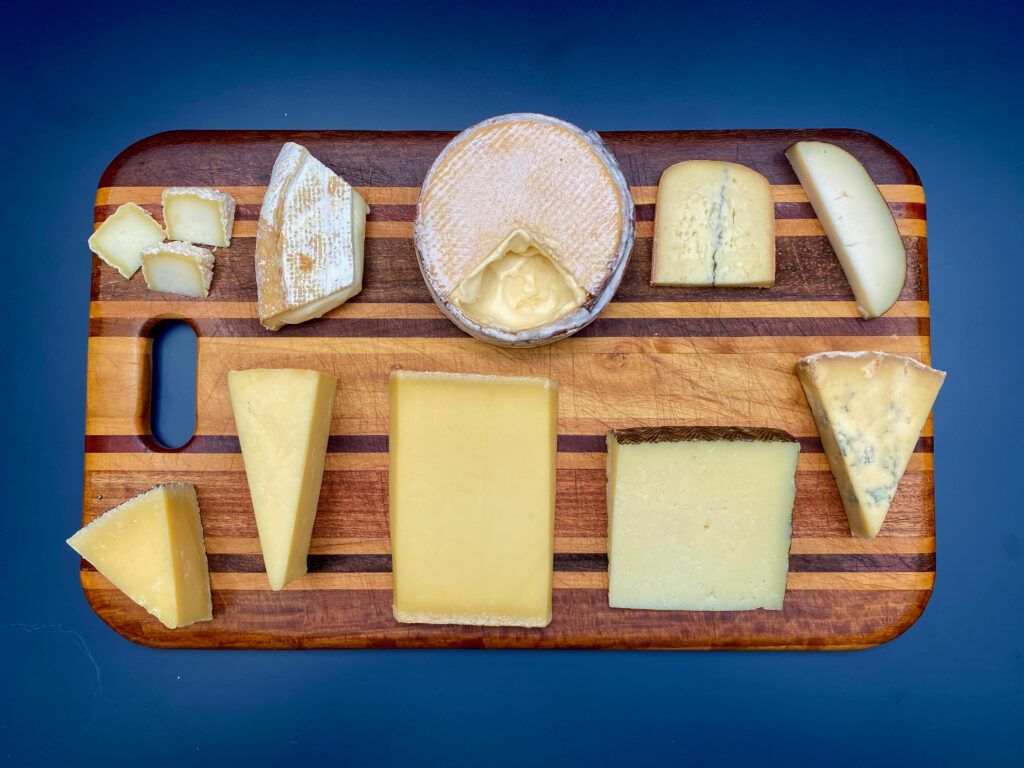

Best Sparkling Wine
Paumanok Vineyards Blanc de Blancs 2016
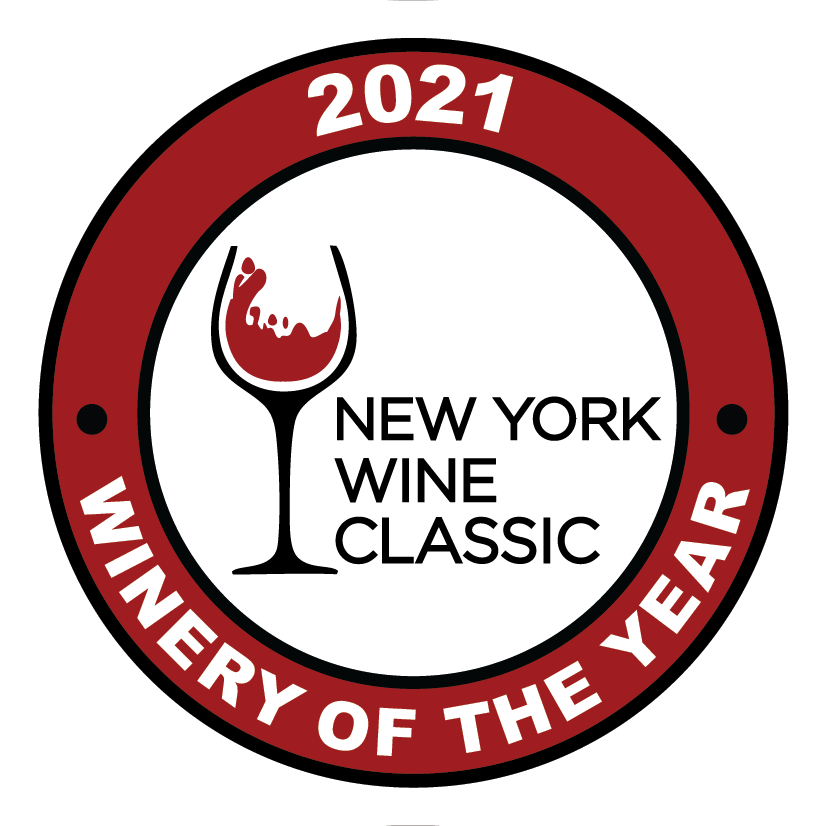
Paumanok Vineyards – Blanc de Blancs 2016
paired with Greensward
also try with Kunik
The first wine is from ‘Winery of the Year’ winner Paumanok Vineyards from the North Fork of Long Island. 100% Chardonnay – It was beautifully textured with fine bubbles – playful, yet serious. Yeasty creamy goodness from 3+ years on the lees, but finishing bright and crisp with baked apple notes – without the use of oak, the fruit can really show off.
Sparkling wines have excellent gastronomic abilities – always with mouth-watering acidity, it is the ultimate palette refresher. The fine mousse further enhances it’s abilities to lift fat off your tongue – you don’t have to work hard for this wine to transform whatever it is you’re eating.
BONUS PAIRING TIP: “We love our Blanc de Blancs with all the fruits of the sea, especially our local oysters that we are fortunate to find in our surrounding bodies of water. Around the holidays and New Year's we enjoy it with caviar. Of course, bubbly should not be reserved for special occasions only, we find our customers enjoy it year round.”
- Kareem Massoud, Winemaker (Paumanok Vineyards)
I started on the softer fresher end of the cheeseboard – a dense young goat’s milk cheese didn’t quite click texturally – and that’s super important – while not easy to guess how a pairing will interact texturally without actually trying it, I believe it to be the “5th element” that can make a good pairing an amazing one.
Then, I found it. Little Rollright – an English Cow’s milk cheese from Gloucestershire – an ooey gooey wonder wrapped in pliable spruce bark, and washed to mild-funky perfection. It’s a cross between a Vacherin Mont d’Or – the OG bark-wrapped cheese, and a Reblochon. I’d say it’s generally mild for a washed rind cheese, maybe a 4 out of 10 on the funk-o-meter. It’s fruity and buttery with just a wisp of pine in the air. The tension in this wine could only be balanced by a cheese with practically no tension – it’s instant fondue!
Unfortunately it’ll be difficult to find little rollright state-side. So look to my old stomping ground Murray’s Cheese for their Cavemaster Edition Greensward (a nod to Central Park’s original moniker). They wash a young Harbison (a spruce-wrapped bloomy rind from Vermont’s Jasper Hill) in CIDER LEES – I think it’s fate. You must try this with the Paumanok Blanc de Blancs – two New York originals!
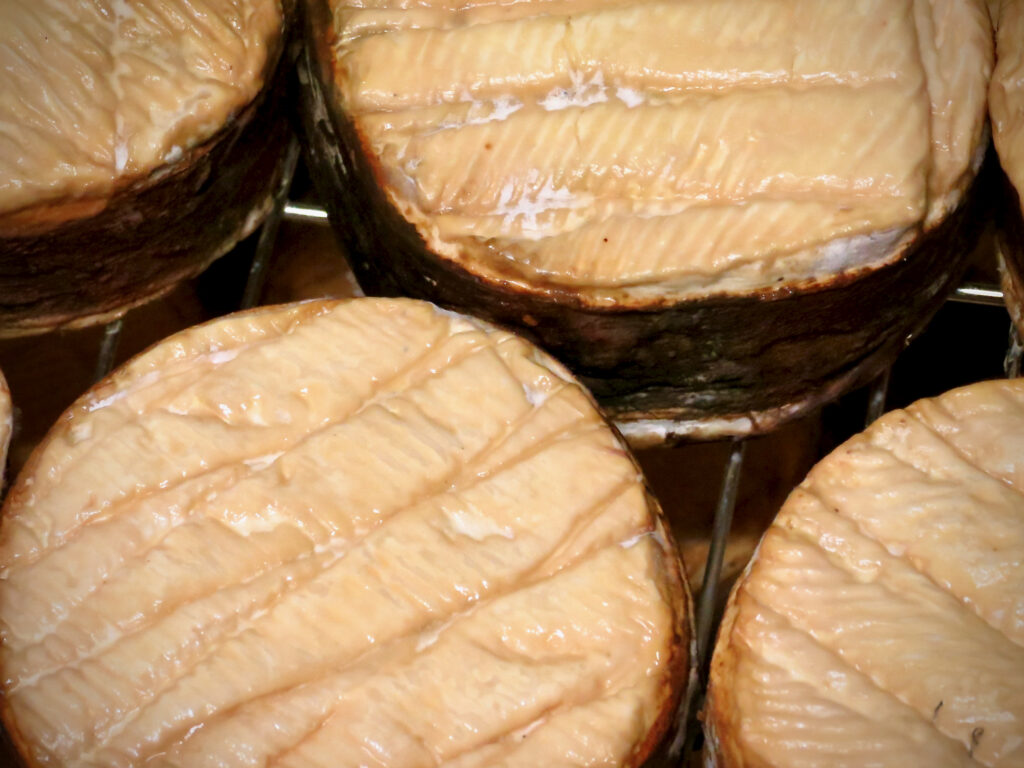

Another New York State favourite – try Nettle Meadow’s Kunik – a bloomy rind triple creme cheese (a triple creme cheese contains 75-83% butterfat in the solid matter of the cheese! Over 83%? That’s butter.) made with goat’s milk and jersey cow’s milk cream. The rich fat content will play very nicely with the textured mousse.
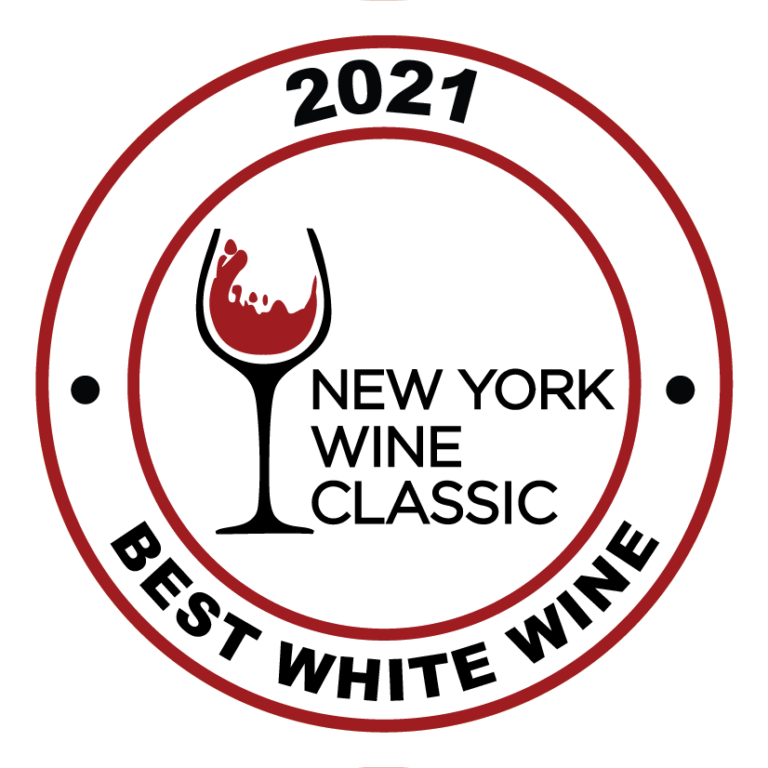

Best White Wine
Pindar Vineyards Dr. Dan’s Signature Collection Gewurztraminer 2019
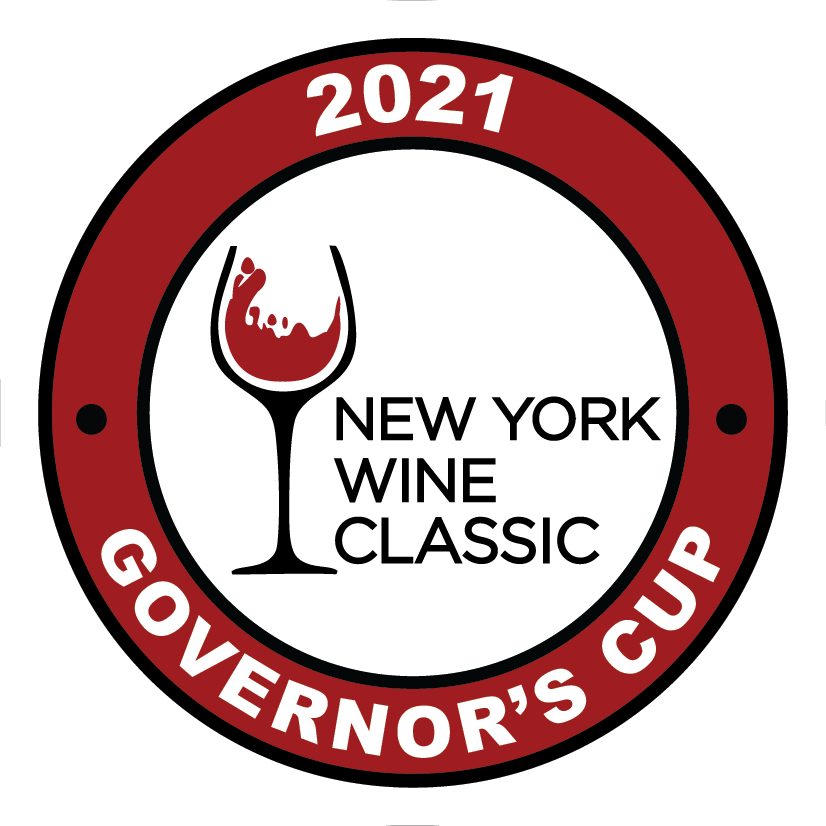

Pindar Vineyards – Dr. Dan’s Signature Gewürztraminer 2019
paired with Morbier
also try with Quadrello di Bufala
I was very excited to see a Gewürztraminer win the Governor’s Cup this year – it’s one of my favourite grape varieties, and I give credit to this grape for laying the foundation for a lifelong wine journey. I was blown away by the tropical exotic aromatics! And I’ve always seeked out quality Gewürzt since. I will say though, a well balanced Gewürztraminer is like winemaking on a knife’s edge. Too much perfume? It’s like drinking the inside of your grandmother’s purse. Too much sugar? Flabby and uninspiring. Not enough perfume? Why bother!
Luckily for us, Dr. Dan hit the nail on the head. Only slightly off-dry with well balanced acidity that plays with the spicy notes from the tip of your tongue all the way through to the looooong finish. An award well deserved! Roses, ginger, allspice, lychee and juicy pineapples and apricots. I’m a fan.
I asked Pindar Damianos, Owner, how he celebrated the win:
“We produced this wine at Pindar Vineyards for the first time this past year. It was a limited production of only 125 cases. It was an exceptional harvest and our winemaker Erik Bilka thought it would make an exceptional standalone wine and a great way to honor our founder Dr. Damianos, a pioneer in the Long Island wine industry. The team enjoyed a few bottles of Pindar with a wonderful meal at a local restaurant Touch of Venice in Cutchogue. A true team effort by all!”
- Pindar Damianos, Owner (Pindar Vineyards)
The classic cheese pairing for Gewürztraminer hails from Alsace along the border of France & Germany. There it’s paired with the local Muenster cheese. I’ll admit – it was never my thing. WAY too much funk, like the NYC subway on a sweltering summer day. But, ‘when in Rome’ – or in this case Colmar at the heart of Alsace, on a visit in 2019… I couldn’t believe how much I was enjoying this hot mess of a cheese! I must have put away a kilo of it. How you ask? It was the wine pairing that made me a believer. The residual sugar and intense perfume of good ole Gewürzt somehow harmonised with the cheese coming together almost inexplicably. An eye-opening moment for me.
Well, without fresh from the source Muenster on hand, I’m going to suggest a crowd-pleasing alternative. I looked further south to neighbouring Jura, to the classic washed-rind cow’s milk cheese – Morbier. You’ll recognise it by its orange-hued rind and trademark thin line of ash through the belly of the cheese. Of course, there’s a story there.
When cows are being milked, they need to be milked twice a day. It’s said that leftover evening-milk curds were protected overnight by a thin layer of ash and then topped off with morning milk the following day and aged as one wheel! These days it’s mostly made in one milking, and food-safe vegetable ash or dye is used – but it’s still a classic!
Gewürztraminer’s ancestral home is Alto Adige in Northern Italy – try it with Quadrello di Bufala, a water buffalo’s milk version of washed-rind Italian legend, Talleggio. Water buffalo’s milk contains high levels of fat and protein – more than goats, cows or sheep – making for very rich cheeses. But it’s ok, because Dr. Dan brings the acid.
The resulting pairings are briney, peanuty, shroomy, fruity, floral, spicy, exotic excellence. Get some.


Best Pink Wine
Ryan William Vineyard Pinot Noir Rosé 2019
Ryan William Vineyard – Rosé Pinot Noir 2019
paired with Vermont Creamery Bijou
also try with Young Goat Gouda
I love Rosé – all shades, any time of year. I’m Brosé for Rosé! But admittedly, of the 16 I stock with Good Wine x Good People, only a select few match the pale Provence shade of this year’s winning Pinot Noir from Ryan William Vineyard on the east side of Seneca Lake.
I guess I find many pale rosés – dare I say …boring? But when you find a good one – oh, what a delight! It doesn’t need saying that this rosé is the latter. I love the quiet elegance of this wine, you could get lost in this colour pink. Even the label is calming. The nose is very specifically of strawberries and watermelon, not muddled and non-specific. The acidity on the palate is bright, focused, and dry. The finish is full of tart berries and goes down like a dream.
I was curious to know if food-pairing is ever taken into consideration while a wine is being made. Winemaker Ryan Williams let us in on a little secret:
“No, luckily, we don’t have to. Growing in a cooler climate takes care of that decision for us, by preserving acid, it ensures our wines are food friendly. The only quality marker we strive for is that the varietal characteristics of the grape are preserved in the wine.”
- Ryan Bossert, Winemaker (Ryan William Vineyard)
A noble pursuit! The Finger Lakes makes food-friendly wine, it’s up to winemakers to guide it to its maximum potential – and not get in the way!
How did I get to this pairing? I tasted this wine and instantly thought of the summer that lies ahead, bright blue skies and sunshine. Backyard BBQ’s and …sport? Ultimately I was inspired by the Strawberries & Cream famously served at the Wimbledon Tennis Tournament!
Did you know that roughly 27 tons of strawberries and 7,000 litres of cream are consumed by tennis fans during the Wimbledon tournament? It’s a classic summer treat and so good when the berries are ripe and fresh. I’m not a big chocolate fan (forgive me), and so fresh berries and creme is a go-to fresh dessert, especially on a warm day.
So the wine brings the fruit – now we need a cheese that’ll bring the cream. I knew we needed those fresh lactic flavours so I looked to the younger fresh cheeses on my board. The brie-style cheese I had was a bit too barnyardy – but the dense cakey goat cheese Crottin really hit the spot. This cheese is an adorable little nugget of bright white paste, wrapped in a delicate wrinkled rind, which is made of geotrichum candidum – my favourite mold!
…yes, obviously I have a favourite mold.
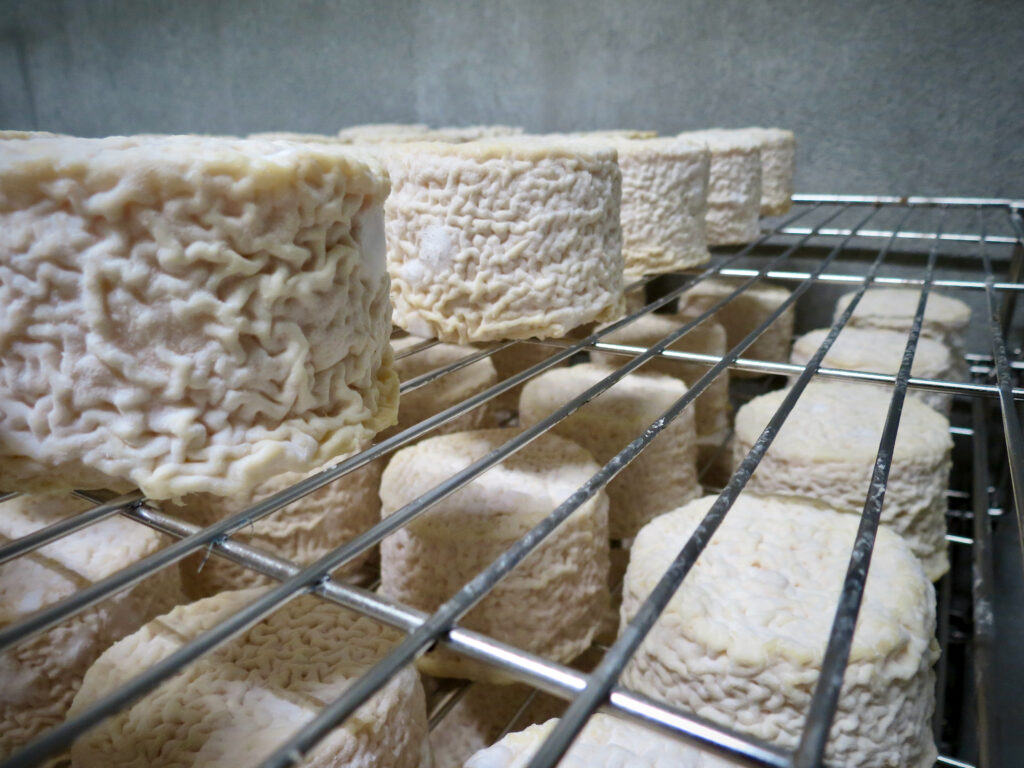

There’s acidity and minerality in the cheese, and so it laid the perfect foundation for the wine. The acid in the rosé worked it’s wonders to break up the dense paste and transform it to that luscious velvety cream that I sought out. Flecks of green grassy herbaceous notes in the cheese even mimicked the slightly under ripe green tops of the strawberries.
You can certainly get your hands on a French Crottin, or you can keep it local with Vermont Creamery’s Bijou. Vermont Creamery is often single-handedly credited with bringing artisan goat cheese production to the United States, and this is one of the classics that put them on the map.
If you want a little less goaty-ness in your pairing, try a Young Goat Gouda, they’re aged for about four months, as opposed to Bijou’s 4 or so weeks, and so a bit more friendly and sweet. A toothsome morsel for this wine indeed!
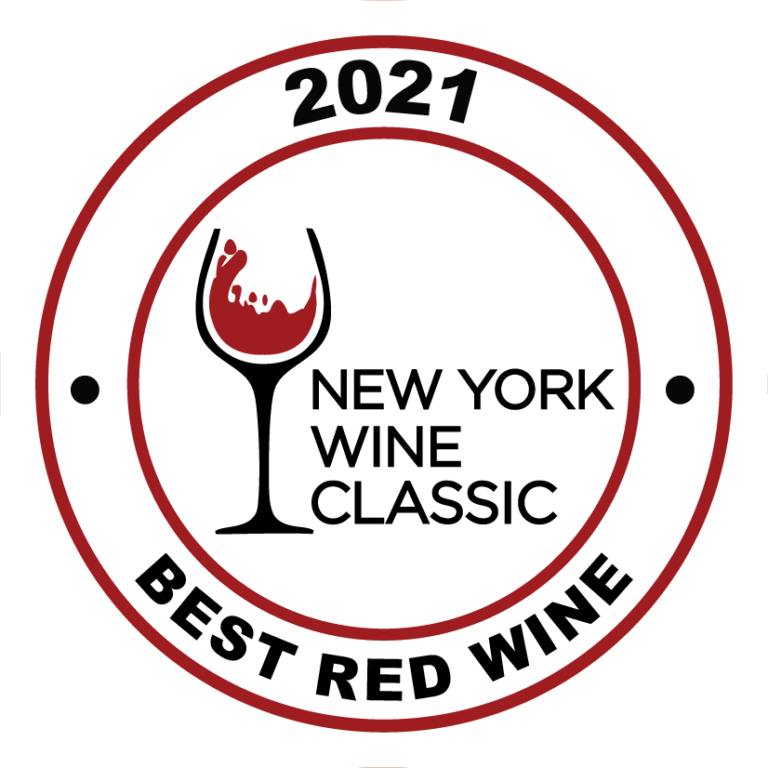

Best Red Wine
Paumanok Vineyards Assemblage 2015



Paumanok Vineyards – Assemblage 2015
paired with Malvarosa
also try with 5 Spoke Creamery Tumbleweed
Tannin is the compound in wine (particularly reds) that dries your mouth out. It comes from two places – the skins of the grapes (hence why it’s common for reds and rare in whites), and oak barrels, particularly new oak. Tannins bind to proteins, and there’s a lot of protein in our saliva! So as you’re swishing that red around in your mouth, the tannins are grabbing all the lubrication on your palate and taking it down with the wine, leaving you with that scratchy, cat-tongue-like sensation. Certain grapes naturally have more tannins present in their skins – Nebbiolo is notorious. And it really comes down to the expression the winemaker is after. How much interaction and maceration the juice has with the grape skins, and how long the wine spends in oak, and finally, what percentage of that oak is new.
Paumanok’s 2015 Assemblage won for both ‘Best Red Blend’ and ultimately ‘Best Red Overall’, and solidified their Winery of the Year win. The blend is primarily Cabernet Sauvignon (71%), which is relatively high in tannins – the rest of the blend includes 8% Merlot, 13% Cabernet Franc and the rest Petit Verdot (another thick skinned grape with high tannin concentration). The wine spends 28 months in French Oak, 16% of which are new barrels.
“Above all, we produce wines with deliciousness in mind. As for markers of quality, it is all determined by the vintage. When we have a great vintage we declare it a "Grand Vintage". We have a range of wines that wear this label, the last such vintage was 2015, so we don't do it every year. The Assemblage is our top red blend, only produced in Grand Vintage years.”
- Kareem Massoud, Winemaker (Paumanok Vineyards)
Tannins account for much of the structure and texture in a wine. They mellow over time, both in the bottle and the glass – you may describe the tannins in a young wine as coarse or rough, but you may find the same wine soft and velvety ten years later. This wine really showcases Kareem’s deft hand. and so if you can show patience with this bottle you’ll be rewarded in both the short and long term. I enjoyed the bottle over two nights. Gently decanted on night one, with lots of swirling in the glass. The next day found the wine more expressive and plush and was quickly finished off.
In order to balance a tannic wine, you need to introduce food with protein so that the tannins in the wine bind with the protein in your food, leaving your palate lubricated. It came as no surprise that Kareem recommended the following pairings:
“The Assemblage pairs especially well with grilled meats whether it be a ribeye steak or rack of lamb, or a steak au poivre or filet mignon.”
Luckily for us, there’s protein in cheese! And as I noted earlier, certain milk types have different levels of protein – goats, then cows, even higher – SHEEP. Aged sheep’s milk cheeses are often innately meaty and rich, and can stand up to many a red wine. I was very happy with the results when paired with a simple aged Manchego – but thought to take the opportunity to introduce you to a favourite – Malvarosa.
To save the nearly extinct Guirra sheep, Valencian cheesemaker Enrique began producing this Manchego-like wheel. Simply bundled in cheesecloth and left to age for a minimum three months each wheel is unique – rich and buttery – both savoury and sweet. The spicy capsicum notes in the wine dance with the saltiness while the ripe fruit in the wine seems less restrained.
I’d be remiss not to recommend a Cheddar – they’re prolific here in the UK, and there are some incredible cheddars produced domestically. This one is unique – Murray’s Cheese describes it – “If farmhouse Cheddar and French Cantal took a roll in the weeds you’d get this little square from 5 Spoke Creamery in Goshen, NY.”
It’s fruity, crumbly, sharp and buttery – an exciting pairing with New York’s top Red!
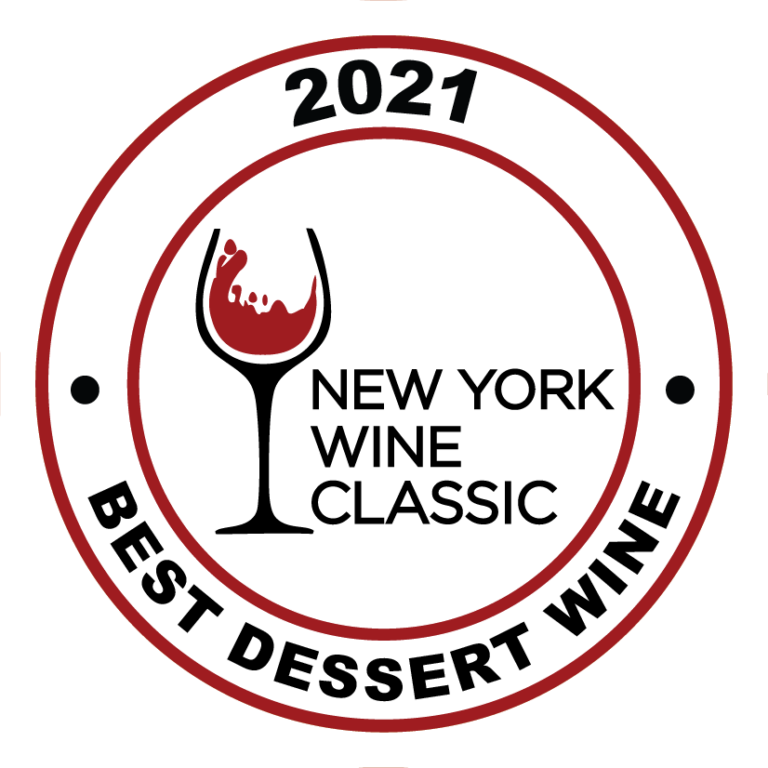

Best Dessert Wine
Boundary Breaks Riesling Ice Wine
Boundary Breaks – Riesling Ice Wine 2019
paired with Cashel Blue
also try with Lively Run Cayuga Blue
When I showed up on day one at the cheese caves, I admit, I was not a big blue cheese fan. Blue cheese dressing for my wings, sure, but not much beyond that. I am officially converted. Telling me you don’t like blue cheese is like telling me you don’t like music – I promise there’s a blue cheese out there for everyone! The range of flavours in blue cheeses is unparalleled.
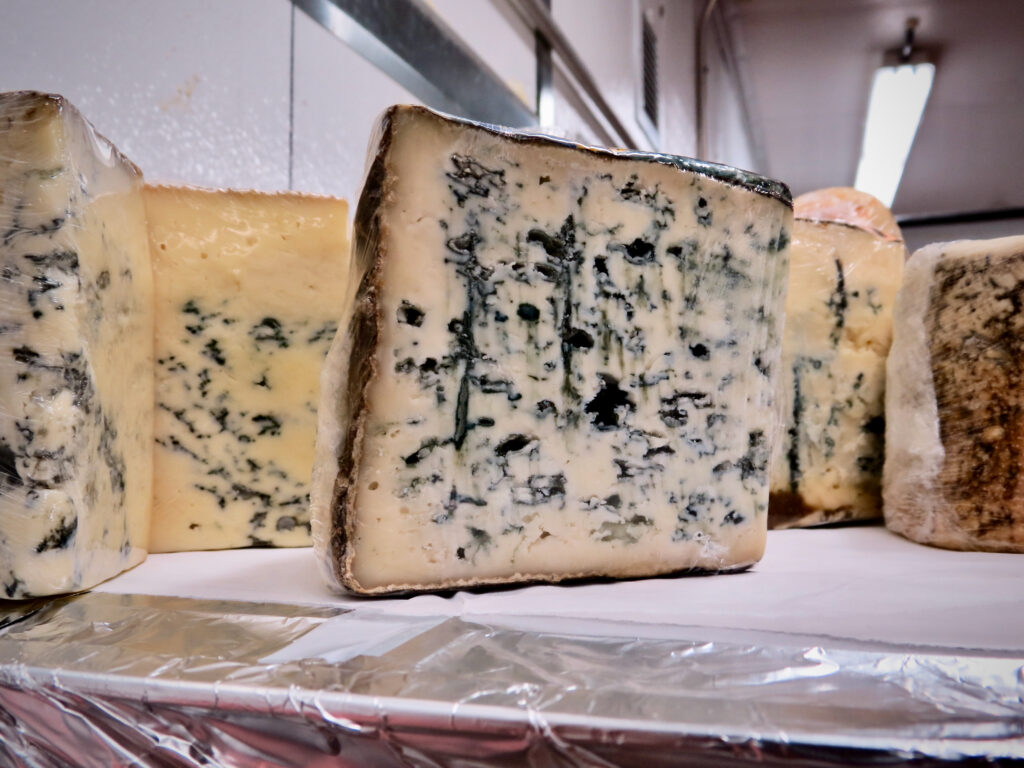

I tried the 2019 Ice Wine from Finger Lakes Riesling powerhouse Boundary Breaks with a lot of different cheeses. And there were some good options in the washed-rind category, but they really didn’t compare to the wow factor of the blue cheese pairings.
Boundary Breaks Co-Owner, Bruce Murray agrees –
“We recommend a strong blue cheese with our 2019 Riesling Ice Wine. Because both have a strong flavor, they pair well together. The saltiness of blue cheese, along with the sweetness and acidity of the Ice Wine make them a great combination.”
- Bruce Murray, Co-Owner (Boundary Breaks Vineyard)
Mold is aerobic – it needs oxygen to grow – and thus blue cheeses are created by introducing blue mold cultures and oxygen to the interior of the cheese, they’re often pierced with needles inoculated with the cultures, creating channels in the wheel – happy blue mold tunnels. The mold continues to break down the paste of the cheese, aging the cheese and developing massive flavours from the inside out. Often these cheeses are also mold-ripened, washed or aged from the outside too – double trouble!
“Ice Wine is made from grapes left out in the vineyard to dehydrate, which causes the juices to become very concentrated. We pick this fruit when the temperatures are 15 degrees Fahrenheit or below. At these low temperatures the remaining water in the juice turns into ice.
When we press these frozen grapes the water stays behind in the press as ice. This yields an even more concentrated grape essence which we make into this wine.”- Bruce Murray, Co-Owner (Boundary Breaks Vineyard)
We’re working with a contrasting pairing – sweet & spicy / sweet & salty. Think about that chocolate covered pretzel – you’re loving on the sweetness of the chocolate and then POW! You get a hit of salt from the pretzel – there’s nothing better, it’s exciting for your palate.
My recommended blue here is Cashel Blue, from County Tipperary in Ireland, where I had the pleasure of visiting with the Grubb family, who developed this prized cow’s milk recipe in the 1980’s. The Emerald Isle is a fitting moniker for Ireland, we arrived at the farm to find rolling hills of lush green pastures – and very happy cows. It is without doubt that happy healthy animals make the best cheeses. The cheese is relatively mild compared to other blues – a ‘gateway’ blue, if you will. Buttery, creamy, with a mineral-driven peppery spice from the bluing, and a bit of a smoky bacon note. The Ice Wine balances with fresh ripe tropical fruit, and dried fruit notes – raisins & dates. With 239 grams of residual sugar per litre, and 8.3% alcohol, the balance is exceptional. You’re not left sticky and cloying, but salivating – hard – and ready for that next bite of beautiful blue.
For a local pairing, try the two award-winning blues from the Finger Lakes’ Lively Run Dairy, only a 15 minute drive from Boundary Breaks – note the differences between their Goat’s milk Cayuga Blue and Cow’s milk Blue Yonder!
I asked Bruce how they celebrated the win: “With Ice Wine, of course.” Fitting! Opening a bottle of this Ice Wine is a celebration in itself.
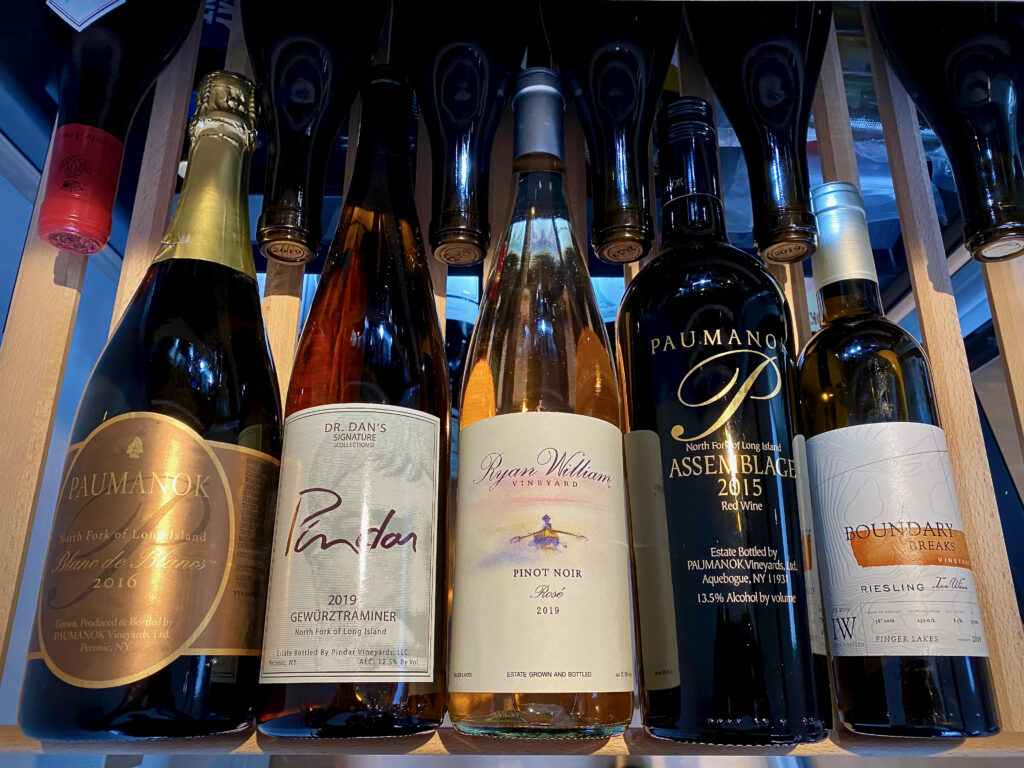

April 29, 2021 | 4:00 PM EST


